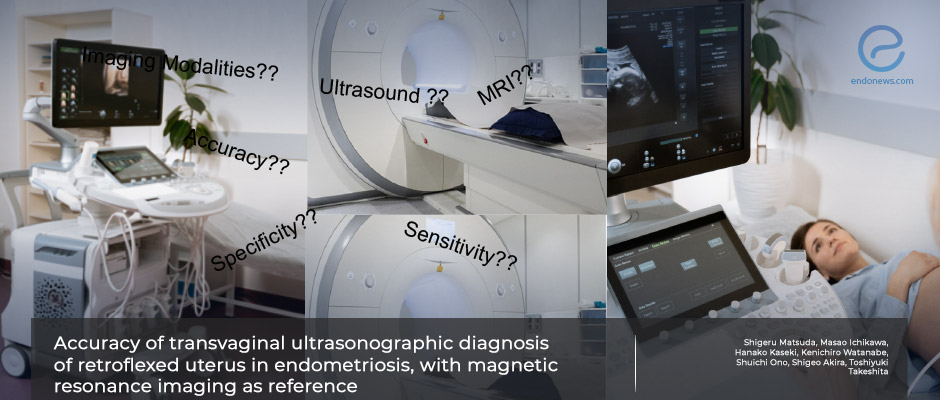Transvaginal ultrasound or MRI for retroflexed uterus in endometriosis
Jan 24, 2023
A comparison of ultrasound and magnetic resonance in initial endometriosis diagnostic work-up
Key Points
Highlights:
- The retroflexion of the uterus is a normal physiologic variant in about 20% of women, however, it is also associated with chronic retracting posterior deep endometriosis and adhesions in endometriosis.
- Retroflexion of the uterus can be diagnosed by transvaginal ultrasonography which is both effective and low-cost but this needs to be compared with more precise magnetic resonance imaging.
Importance:
- Correct assessment of the uterine angle is important in evaluating preoperative and postoperative symptoms in patients with endometriosis.
What's done here:
- Transvaginal ultrasound and magnetic resonance images of patients who had endometriosis surgeries (n=123) in a five-year period were retrospectively analyzed in regard to accuracy and effectiveness.
Key Results:
- Flexion angles measured on transvaginal ultrasound showed a strong positive correlation with magnetic resonance imaging.
- However, an anteverted retroflexed uterus is an important limitation in using transvaginal ultrasound for retroflexion measurement.
Potential limitation:
- A single examiner even though an expert on this issue performed all transvaginal ultrasounds, so these findings may not be relevant to other examiners.
Lay Summary
Dr Matsuda and colleagues from the Department of Obstetrics and Gynecology, Nippon Medical School, Tokyo, Japan have published their study evaluating the effectiveness of transvaginal ultrasound on the diagnosis of uterine retroflexion in a recent issue of “Journal of Nippon Medical School”.
Uterine retroflexion is a variant present in 20% of healthy women, but it is also associated with posterior deep endometriosis and adhesions in endometriosis. Adhesion or closure of the cul-de-sac obliteration is frequent in deep endometriosis which may complicate surgery and increase the risk of damage to nearby tissues like the rectum and ureter. Precise uterine angle assessment is important in evaluating preoperative and postoperative symptoms in patients with endometriosis.
Transvaginal ultrasounds and magnetic resonance images of 123 patients who had endometriosis surgery between 2007 and 2012, were retrospectively analyzed in regard to accuracy and effectiveness with a comparison with magnetic resonance images.
The uterine flexion angles on transvaginal ultrasonography were strongly positively correlated with MRI results. Transvaginal ultrasound yielded no false-positive diagnoses but there were 28 false-negative diagnoses of retroflexion. All false-negative diagnoses were in patients with anteverted retroflexed uteruses.
Ultrasound is a dependable diagnostic modality as magnetic resonance for evaluating retroflexion during an evaluation for endometriosis. "Misdiagnosis of the anteverted retroflexed uterus was a limitation of using transvaginal ultrasound for retroflexion diagnosis", the authors concluded.
Research Source: https://pubmed.ncbi.nlm.nih.gov/36273903/
transvaginal ultrasonography magnetic resonance imaging endometriosis uterine retroflexion

